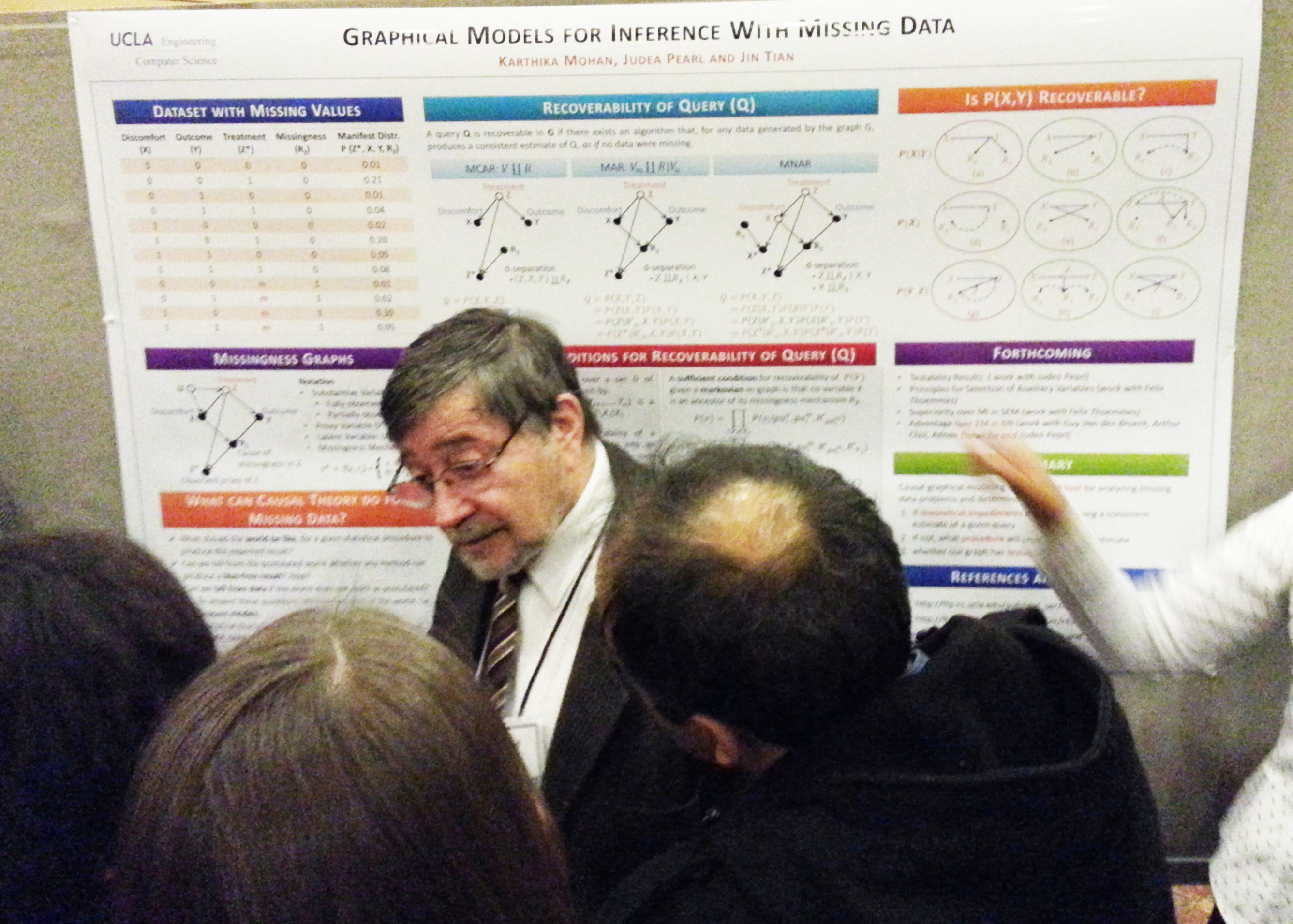Pearl, Judea (2008) "Causal Inference," in: Pearl, Judea. The science and ethics of causal modeling. (2010).
Famous Judea Pearl Quotes
Source: Causality: Models, Reasoning, and Inference, 2000, p. 309, as cited in: Rinke Hoekstra (2009), Ontology Representation: Design Patterns and Ontologies... p. 181
Source: Causality: Models, Reasoning, and Inference, 2000, p. 77 : cited in: Rick H. Hoyle (2014). Handbook of Structural Equation Modeling. p. 75
Hoyle (2014) further explained: In words, the functional details of M1 and M2 do not matter; what matters is that the assumptions in A (e.g. those encoded in the diagram) would constrain the variability of those details in such a way that equality of P's would entail equality of Q's. When this happens, Q depends on P only and should therefore be expressible in terms of the parameters of P. The section “Identification Using Graphs” will exemplify and operationalize this notion.
Source: Causality: Models, Reasoning, and Inference, 2000, p. 14
Pearl, Judea. "Causal inference in statistics: An overview." Statistics Surveys 3 (2009): 96-146.
Source: Causality: Models, Reasoning, and Inference, 2000, p. 1
Source: Probabilistic Reasoning in Intelligent Systems: Networks of Plausible Inference, 1988, p. 42: Example of an uncertain evidence
Source: Probabilistic Reasoning in Intelligent Systems: Networks of Plausible Inference, 1988, p. 195
Judea Pearl, "Trygve Haavelmo and the emergence of causal calculus." University of California Los Angeles, Computer Science Department, CA. 2012.
